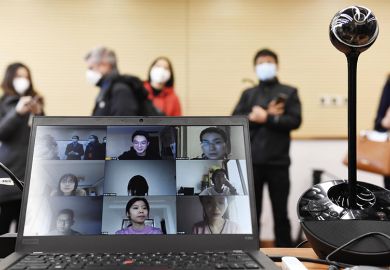We’re in the midst of national conference season for administrators in the US and among this year’s list of hot topics is how institutions can meaningfully counter the claim that the value of a college degree is declining.
Most often this discussion is held at the presidential, provost and board level, but if we are to mount the strongest defence against these attacks, then the chief student affairs officers must also be included.
The Association of American Colleges and Universities recently released a survey which found a gap between how prepared students believe they are for their chosen profession and how ready employers believe those same students to be.
Only about a quarter of employers surveyed believe recent graduates are well prepared in critical thinking and analytic reasoning, written and oral communication, complex problem solving, innovation and creativity, and applying knowledge and skills to real-world settings.
By contrast, over 60 per cent of students rate themselves as well prepared in these areas.
This finding underscores higher education’s need to identify new and effective ways to quantify and communicate our students’ achievements.
Employers are telling us they need insight into the soft skills — skills that are frequently gained outside the classroom and which are often the hallmarks of a liberal arts degree.
Those who can best provide that information are my colleagues in student affairs, yet they are often among the last to be asked to offer solutions.
A number of institutions are developing curricula to teach the soft skills that employers have identified as so important; these efforts involve both faculty and student affairs professionals creating clear paths for learning defined skills.
But teaching these skills isn’t enough if we don’t have a common vocabulary for the related outcomes or a common understanding of what they represent.
Student affairs teams have developed a number of ways to describe the experiences of our students that align with the skills employers say they want.
Co-curricular transcripts offer one solution, by allowing students to better reflect the skills they bring to the workforce, establishing expectations for their performance. Some badging options can be tied to assessment, which allows students to prove their claims of skill-specific competency. And portfolios allow students to share tangible examples of how and when they believe they’ve distinguished themselves.
The format adopted by many institutions serves as a companion to the academic transcript and allows students to elaborate on their learning experiences and institutions to validate the mastery of skills.
This differentiation allows us, as an industry, to move away from what students say they have learned and instead authenticate students’ claims. Campuses can provide the mechanisms for students to move beyond claims of “what I did” and instead focus on “what I learned, mastered and can perform in the workplace”, which bridges the communication gap brought to light by the AAC&U research.
This approach allows for a comparable way of describing internships, part-time jobs, leadership experiences and other educational experiences. A co-curricular transcript, portfolio or badging can help document those experiences that hold value among employers and provide a way for students to describe their accomplishments to give them a leg up when job hunting.
Co-curricular records can provide career advisers with valuable information that allows them to reflect with students on how experiences outside the classroom have given them translatable skills in areas such as leadership, communication and critical thinking. These transcripts also allow institutions with strong co-curricular offerings to highlight how they excel.
If we think institutions are too different in size and mission to allow these efforts to succeed in the US, then we should look to the experience of our colleagues in the UK, where the Higher Education Achievement Report has been adopted by 27 institutions.
As the UK example demonstrates, it is possible to find common ground and work together on behalf of our students.
Back in the US, efforts are under way to develop data that formally link the skills employers are looking for with the out-of-classroom experiences students have identified for attaining those skills.
But even before that work is completed, it is clear that we must develop a better way to highlight student achievement – and that this method needs to reflect more than just a listing of the courses taken and the grades received.
Brandon Busteed, executive director of Gallup Education, summarised the need for partnering across campus quite well: “It’s time to end the dichotomy between student and academic affairs once and for all,” he said. “The core work of student affairs is the core work of the academy, period. Student affairs is the new academic affairs, especially if we care about long-term outcomes like graduates getting great jobs and having great lives.”




